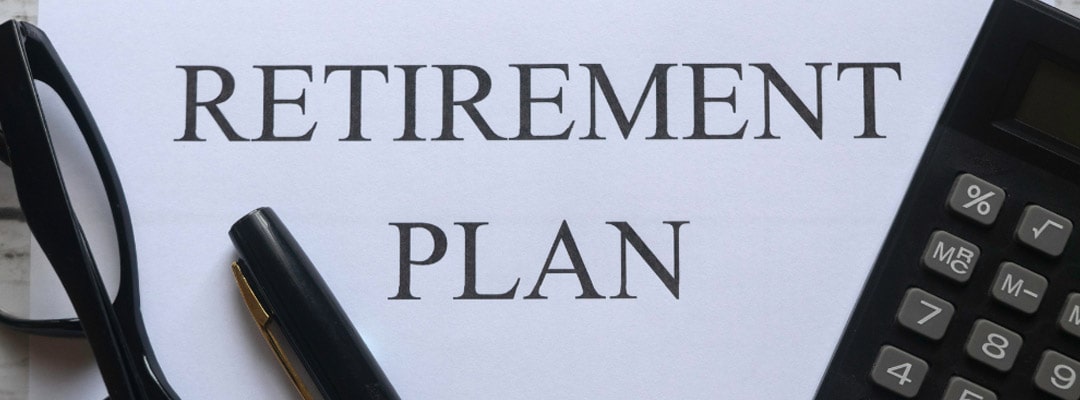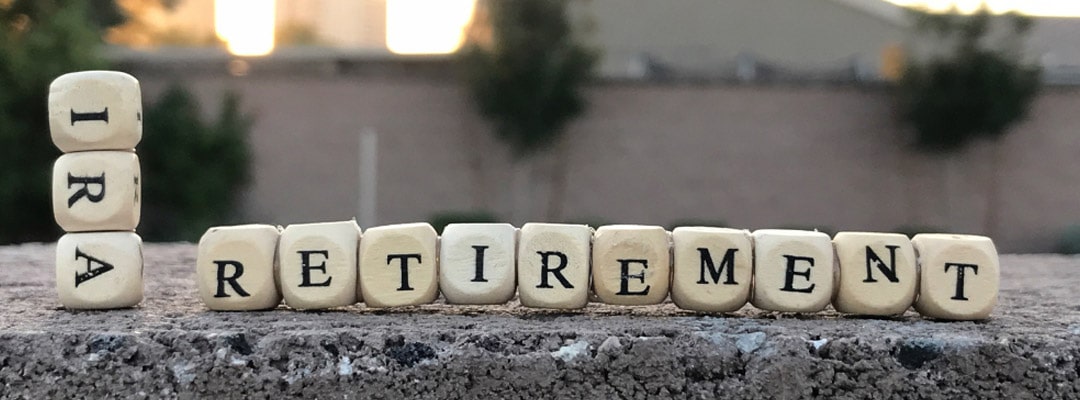Retirement can feel like a financial puzzle. How do you make your money last while still enjoying life?
Traditional methods might leave you worried about outliving your savings or missing out on opportunities.
The Retirement Bucket Strategy offers a simple, organized way to manage your money so you can relax and enjoy your golden years.
For additional financial resources, be sure to visit the Institute of Financial Wellness (IFW) and access a library of knowledge, including a retirement guide and debt management strategies.
Understanding the Retirement Buckets
Think of your retirement savings like three buckets, each with a different purpose. Here is the 3 bucket strategy to follow:

Bucket 1: Short-Term Needs (1-5 Years)
This is your “rainy day” fund. It covers unexpected expenses like car repairs or medical bills.
It’s also where you’ll pull money for your day-to-day living in the early years of retirement.
Since you’ll need this money soon, it should be invested in safe, stable places where it won’t lose value.
Think of it like keeping cash in a piggy bank – it’s always there when you need it.
Bucket 2: Mid-Term Needs (6-15 Years)
This bucket is for expenses you know are coming later.
It could be a new roof for your house or that dream vacation you’ve always wanted. You have more time to let this money grow so that you can take on a bit more risk.
It’s like planting seeds in a garden – you nurture them and watch them grow over time.
Bucket 3: Long-Term Needs (15+ Years)
This is your “legacy” bucket. It’s for the later years of retirement when you need help with healthcare or living expenses.
Since this money has a long time to grow, you can invest it in things that have the potential for big gains, even if they’re a little riskier.
Think of it like planting an oak tree – it takes time, but it can grow strong and provide shade for generations to come.
Step 1: Assess Your Retirement Goals and Needs

Before filling your buckets, you need a roadmap. What’s your dream retirement?
- Lifestyle: Travel? Relax at home? Downsize? Hobbies?
- Expenses: Basic living, healthcare, long-term care?
- Income: Social Security, pensions, 401(k)? How much is needed from savings? Factor in inflation.
- Risk Tolerance: Comfortable with market volatility? More risk for higher returns, or prefer safer investments?
- Time Horizon: Years until retirement? A longer time horizon = more potential risk.
Retirement planning is personal. Your plan should reflect your unique goals. It’s okay if plans change. Life’s unpredictable, and your plan should adapt.
You can also search for retirement scores to understand how fast you can retire.
Once you understand your needs, figure out how much to save and invest.
The bucket strategy helps organize savings based on when you’ll need the money, balancing risk and reward.
Tip: A financial advisor can help assess goals and create a personalized plan. You can simply reach them using webinar software.
Remember: Even if retired, reassess goals and adjust. Life’s a journey, and so is retirement.
Next up: Your current financial situation and building your buckets!
Step 2: Evaluate Your Current Financial Situation
Now, let’s see what you have to work with. It’s like taking inventory before a big baking project – you need to know your ingredients!

List Your Assets:
This is everything you own that has value:
- Savings accounts, checking accounts, money market accounts
- Investments like bonds, stocks, mutual funds, & real estate
- Retirement accounts like 401(k)s, IRAs, and pensions
- The value of your home (if you own it)
- Any other valuable possessions
List Your Debts:
This includes:
- Mortgage
- Car loans
- Student loans
- Credit card debt
- Any other outstanding loans
Calculate Your Net Worth:
Subtract your debts from your assets. This is your financial starting point.
Estimate Your Retirement Income:
- Social Security benefits
- Pension payments
- Any other sources of retirement income
Now that you have a clear picture of your financial situation, you can start to build your retirement buckets. Remember, the goal is to match your investments with your needs.
Bucket 1 (Short-Term):
This is your safety net, so you want investments that are stable and easily accessible. Think cash, high-quality bonds, or even a high-yield savings account.
Bucket 2 (Mid-Term):
Here, you can take on a bit more risk for potential growth. Consider a mix of stocks and bonds or balanced mutual funds.
Long-Term Bucket:
This is where you can aim for the stars! Invest in things with high growth potential, like stocks or growth-oriented mutual funds. Just remember, there’s also a higher chance of market fluctuations.
Don’t worry if you don’t have enough to fill all three buckets right now. The important thing is to start saving and investing as early as possible. Even small contributions can make a big difference over time.
Remember, it’s okay to ask for help! If you’re feeling overwhelmed, consider talking to a financial advisor. They can easily help you assess your situation & create a personalized retirement plan.
Step 3: Create Your Retirement Buckets

Now that you know your goals and what you have to work with, it’s time to start filling those buckets!
Think of it like packing for a long trip. You wouldn’t put your swimsuit in your carry-on if you’re not going to the beach for a week.
Some companies offer a retirement score webinar so that you can get a better understanding of your retirement.
Same idea here – we’re organizing your money based on when you’ll need it.
Short-Term:
This is for expenses in the next 1-5 years. You want this money safe and sound, so stick to things that won’t lose value even if there’s a market downturn.
Think of it like your emergency fund – you want it there when you need it, no questions asked.
Mid-Term:
This is for expenses 6-15 years out. You have a little more time to let this money grow so that you can take on a bit more risk.
Think of it like planting seeds in a garden – you nurture them, and they’ll hopefully bloom into something beautiful.
Long-Term:
This is for expenses 15+ years away. This is where you can really let your money grow and potentially earn higher returns. But remember, with higher potential returns comes higher risk.
It’s like investing in a young company – it might take off and make you a lot of money, or it might not pan out.
How much you put in each bucket depends on your situation and risk tolerance. A financial advisor can help you figure out the right asset allocation for you.
Remember, this isn’t a one-and-done deal. Your retirement income plan needs regular check-ups. As you get closer to retirement, you might need to shift money between buckets.
And if there’s a big change in your life or the market, you might need to adjust your plan altogether.
The key is to stay flexible and keep your eye on the prize – a comfortable and secure retirement.
Step 4: Develop an Investment Strategy
Now comes the fun part: picking and maximizing your investments!
It’s like choosing what to plant in your garden – you want a mix of things that will thrive in different conditions.

Short-Term Bucket:
Safety first! Think of this like your “rainy day” fund. You want investments that are easy to access and won’t lose value if the stock market has a bad day. Good options include:
- High-yield savings accounts: These offer more interest than regular savings accounts.
- Certificates of Deposit (CDs): These lock your money away for a set time, but they offer a guaranteed interest rate.
- Short-term bond funds: These invest in bonds that mature soon, so they’re less sensitive to interest rate changes.
- Money market funds: These invest in very safe, short-term debt.
Mid-Term Bucket:
Here, you can take on more risk for potential growth. Think of it like planting seeds that will grow into beautiful flowers – it takes time, but the payoff can be worth it. Good options include:
- Balanced mutual funds: These invest in a mix of stocks and bonds, offering a balance of growth and stability.
- Dividend stocks: These are stocks of companies that pay out a portion of their profits to shareholders, providing a steady stream of income.
- Real estate investment trusts (REITs): These invest in properties and pay out dividends to shareholders.

Long-Term bucket:
This is where you can aim for the stars! Think of it like planting an oak tree – it takes time, but it can grow strong and provide shade for generations to come. Good options include:
- Growth-oriented mutual funds: These invest in companies that are expected to grow quickly.
- Individual stocks: If you’re comfortable with more risk, you can pick individual stocks. Just be sure to do your research!
- International investments: Diversifying your portfolio with investments in other countries can help spread your risk.
Remember, the right mix of investments for you will depend totally on your risk tolerance, time horizon, and goals. Feel free to ask for help from a financial advisor.
They can help you make an investment strategy that’s tailored to your needs.
Also, remember your retirement accounts! These offer tax advantages that can help your money grow faster.
If you have one of the employer-sponsored retirement plans, be sure to contribute enough to get the full match – it’s free money!
The main key is to start investing early and stay consistent. Even small contributions can add up over time, thanks to the power of compound interest. So don’t wait – start building your retirement nest egg today!
Step 5: Implement Your Plan
Alright, you’ve got your buckets, and you know what to put in them. Now it’s time to get to work! Think of it like finally getting to plant those seeds you’ve been carefully selecting.

- Open Investment Accounts: You’ll need a place to put your money. This could be with a brokerage firm, a robo-advisor, or even through your employer’s retirement plan. Shop around & find one that fits your needs and budget.
- Buy Your Investments: Now it’s time to actually buy the stocks, bonds, mutual funds, or whatever else you’ve chosen for each bucket. Remember, it’s okay to start small. The important thing is to get started!
- Rebalance Your Portfolio: Over time, some of your investments will do better than others. This can throw off your asset allocation – the mix of stocks, bonds, & other investments in your portfolio. Rebalancing means selling some of your winners and buying more of your losers to get back to your target allocation. Think of it like weeding your garden – you want to keep everything in balance so all your plants can thrive.
- Consider a Financial Advisor: If you’re feeling overwhelmed or want a second opinion, consider talking to a financial advisor. They can help you make sure your plan is on track and adjust it as needed.
Remember, investing isn’t a set-it-and-forget-it thing. You need to keep an eye on your investment portfolio and make adjustments as needed.
The market can be unpredictable, & there will be a down market along the way. But if you stick to your plan and stay diversified, you’ll be well on your way to a comfortable retirement.
Here are a few extra tips:
- Don’t try to time the market: It’s not possible to predict when the market will go up or down. Just stay invested and focus on the long term.
- Stay diversified: Don’t put all the eggs in one basket. Spread your investments across some different asset classes to reduce your risk.
- Keep emotions in check: Investing can be emotional, especially during market downturns. But try to stay calm and stick to your plan.
- Consider income funds: As you get closer to retirement, you should shift some of your investments into income funds. These invest in things like bonds and dividend stocks that generate a steady stream of income.
Remember, the most important thing is to start saving and investing as early as possible. The sooner you start, the more time your money has to grow. So don’t wait – start building your retirement nest egg today!
Step 6: Monitor and Adjust Your Strategy
Congratulations! You’ve set up your retirement buckets and started investing.
But your work still needs to be completed. Think of it like tending a garden – you need to keep an eye on things and make adjustments as needed.

- Regular Check-Ups: Review your investments at least once a year. Are they performing as expected? Do you need to make any changes?
- Life Changes: Big events like a new job, a marriage, or a child can impact your retirement plan. Make sure to adjust your strategy as needed.
- Market Changes: The market can be unpredictable. If there’s a big downturn, don’t panic! Talk to your financial advisor about whether you need to make any changes to your portfolio.
- Rebalancing: As your investments grow, some might do better than others. This can throw off your asset allocation. Rebalancing means selling some of your winners and buying more of your losers to get back to your target allocation. Think of it like pruning a plant – you’re helping it grow healthily.
- Closer to Retirement: As you get closer to the retirement, you should shift more of your money into your short-term bucket. This will simply help ensure you have enough cash on hand to cover your expenses in the early years of retirement.
Remember, the bucket investment strategy isn’t a one-size-fits-all solution. You should make adjustments along the way.
But if you stay disciplined and keep your eye on the prize, you’ll be well on your way to a comfortable and secure retirement.
Here are a few extra tips:
- Be bold and ask for help: If you need help with what to do, talk to a financial advisor. They can help you make sure your plan is on track and adjust it as needed.
- Stay informed: Keep up with latest news about the economy and the markets. This will help you make informed decisions about your investments.
- Be patient: Building a retirement nest egg takes time. Keep going even if you don’t see results overnight. Just stay consistent and keep saving and investing.
The bucketing strategy for retirement is a powerful tool that can easily help you achieve your financial goals.
By following these steps & staying disciplined, you can make a retirement plan that gives you peace of mind and the freedom to enjoy your golden years.
Benefits of the Retirement Bucket Strategy
Let’s talk about the bucket strategy’s advantages – it’s a smart way to organize your retirement savings.

- Peace of Mind: A clear plan reduces worry about running out of money or making bad investment choices.
- Flexibility: Life changes happen. This strategy allows you to adjust when needed. Unexpected expense? Use your short-term bucket without affecting long-term goals.
- Discipline: It encourages regular saving and investing. It’s like a fitness routine for your finances.
- Risk Management: Spreading your money across buckets lowers risk. If one struggles, others can balance it.
- Growth Potential: The long-term bucket allows for investments with higher potential gains.
- Simplicity: The strategy is very easy to understand and use, even if you’re not a financial expert.
In short, the bucket strategy offers a clear path to a comfortable retirement.
Conclusion
We’ve covered a lot, but remember, the bucket strategy is about more than just money. It’s about creating a retirement where you’re not just surviving but thriving.
It’s about that dream vacation, spoiling your grandkids, or finally pursuing that hobby you never had time for.
Maybe you’ll spend your days kayaking on a serene lake or perfecting your swing on the golf course.
It’s about peace of mind, knowing you’ve planned wisely and can enjoy life without financial worries.
Is it foolproof? No plan is. But the bucket strategy gives you a strong foundation. It’s like building a sturdy house – it can weather storms & stand the test of time.
So, what are you waiting for? Start filling those buckets today. Your future self will thank you!
Frequently Asked Questions
Can I start the bucket strategy at any age?
Absolutely! It’s always possible to start planning for retirement. While starting early allows for more growth, the strategy can benefit anyone by organizing finances and creating a sustainable income plan.
How often should I rebalance my buckets?
Review your portfolio at least annually & rebalance if needed. Rebalancing helps maintain the desired asset allocation & manage risk as investments grow at different rates.
What if I need to withdraw money from my long-term bucket for an emergency?
While it’s best to avoid it, emergencies happen. If necessary, withdraw from the long-term bucket, but be mindful of potential tax implications & the impact on your long-term growth.
How do I choose the right investments for each bucket?
Align investments with your risk tolerance and the bucket’s time horizon. Generally, prioritize stability for the short-term, balance stability and growth for the mid-term, and focus on growth potential for the long-term.
Can I manage the bucket strategy on my own?
Yes, you can. However, a financial advisor can offer valuable guidance, especially in assessing your situation, choosing investments, and adjusting your plan.




